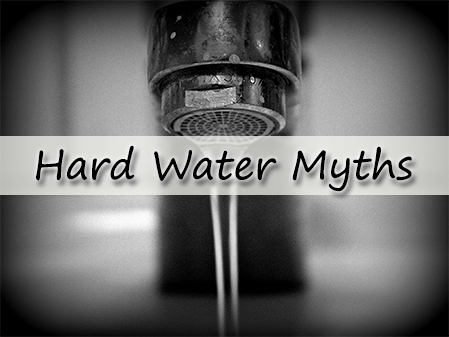Maintenance and service on water softeners is pretty basic when it comes to the world of appliance upkeep. The exception to this, however, is the initial installation of the water softener. Determining the water hardness level, regeneration timing parameters, salt to use, and when to refill the salt so the softener can perform properly can be a bit tricky. Proper water softener set up can make long term maintenance easier and the softener perform more efficiently and last longer.
Ongoing Maintenance – Tips for Residential Water Softeners
Avoid Salt Bridges
Salt bridges occur when an empty space is created in the
brine tank between the water and the salt.
This prevents the salt from dissolving in the water which is how brine
is made. Without brine the resin beads
that soften the water are unable to do their job.
The most common cause of bridges are high humidity, temperature changes, or using the wrong type of salt. Salt bridges make it appear that the salt in your water softener tank is full. Your water, however, will be hard because the salt is not dissolving to make brine. To remove a salt bridge, use a long handle and slowly push the top of the salt downward. A little bit of pressure is all that is needed to break up the solidified salt.
Prevent Salt Mushing
Salt mushing is more serious than salt bridges. This occurs when the salt dissolves and then recrystallizes to form a sludge on the bottom or the brine tank. This thick layer of sludge keeps the softener from cycling properly during the regeneration process. Hard water remains and a serious blockage is created in the tank. If you attempt to remove a salt bridge and it does not break up, salt mushing is probably the cause of your hard water problem. The only way to fix the issue of salt mushing is to drain the softener of all water, remove the old salt and sludge, and replace it with fresh salt.
To prevent both salt bridges and salt mushing it is
important to use high quality salt products as they greatly reduce the
potential for problems. Also, it is
important not to overfill the brine tank with salt. Keeping it only half-fill will prevent older
salt from sticking to the walls of the softener tanks. Preventing humidity around the water softener
can also help. An environment with high humidity can lead to condensation in
the brine tank which will cause salt to bond together.
Water Softener Salt
In choosing salt to use in your water softener you will be able to choose from rock, solar, and evaporated salt. Rock salt is the cheapest however contains the highest level of insoluble minerals. When this occurs, the result is a muddy tank which decreases the softening efficiency and leaves impurities in your water. Solar salt is more soluble than rock salt. Solar salt is obtained through the evaporation of sea water and is found in crystal and pellet form. The best option for salt to use in your softener is evaporated salt. This is obtained through the combination of evaporation and mining. Solar salt is 99.99% sodium chloride and is the purest form of salt.
Salt with high levels of purity leave less residue thus lower the likelihood of salt bridging and mushing. Purer salt results in less maintenance and high-quality salt in pellet form helps to eliminate bridging issues. Water softener salt delivery allows you to order top quality salt brand products that address specific issues such as high concentrations of iron, rust stains, and salt free alternatives like potassium chloride.
Resin Bed Cleaning
Resin beads are routinely recharged by salt, but this doesn’t mean that the resin bed shouldn’t be flushed every few months with a cleaner designed for water softeners every few months to keep it in top shape. Water softening units can become polluted with iron, silt, metals, and a variety of different organic compounds which decrease your softeners efficiency. The process to reduce the ineffective resin is fairly simple. You will pour the manufacturers recommended amount of cleaner down the brine well and manually regenerate the water softener. The cleaner will be discharged during the normal flushing process during the softening cycle. This action cleans the resin and helps the absorbency of calcium and magnesium.
Clean the Venturi Valve
The venturi and nozzle work to create suction that moves
brine from the brine tank into the resin tank during regeneration. Sometimes this valve can become plugged up
with sand, sediment, or dirt. A clean
valve is imperative for water softening to occur properly. This can be accomplished by unscrewing the
cover of the valve, removing internal parts, and cleaning them all with soap
and water. Completing this process twice
a year will help keep the process running smoothly and more efficiently.
Periodic maintenance, regular upkeep, and monthly checkups all prevent major incidents from compiling and affecting the quality of the water running through your home. Hard water leads to major expenses, like new appliances, plumbing issues, and more, when left untreated.
The experts at Reynolds Water Conditioning have a
solution to your homes unique water quality needs
including: arsenic,
bacteria, chlorine, rotten egg smell, fluoride, hard water, iron, lead, acid,
tannins, radon, and more. More information on our water treatment
solutions including water
softeners and conditioners, water
filtration and purification, reverse
osmosis drinking water, and iron & odor
removal can be found online at https://reynoldswater.com.


